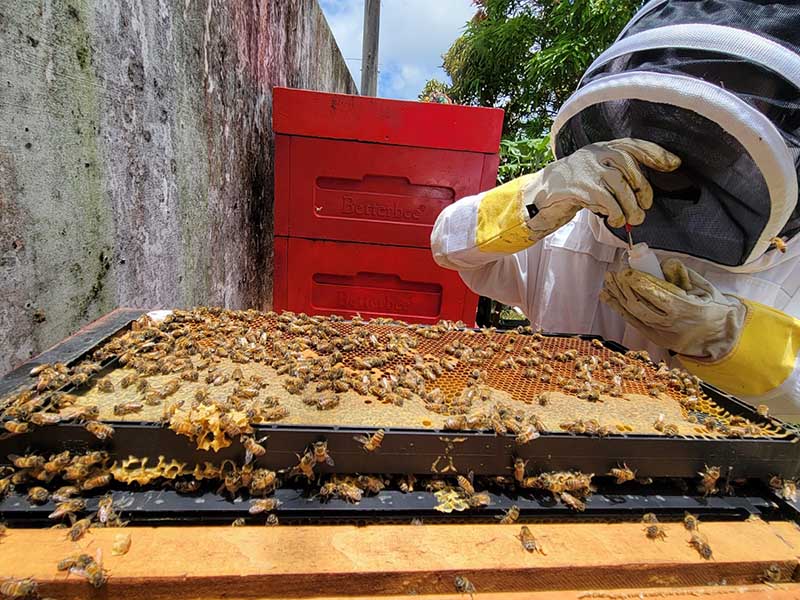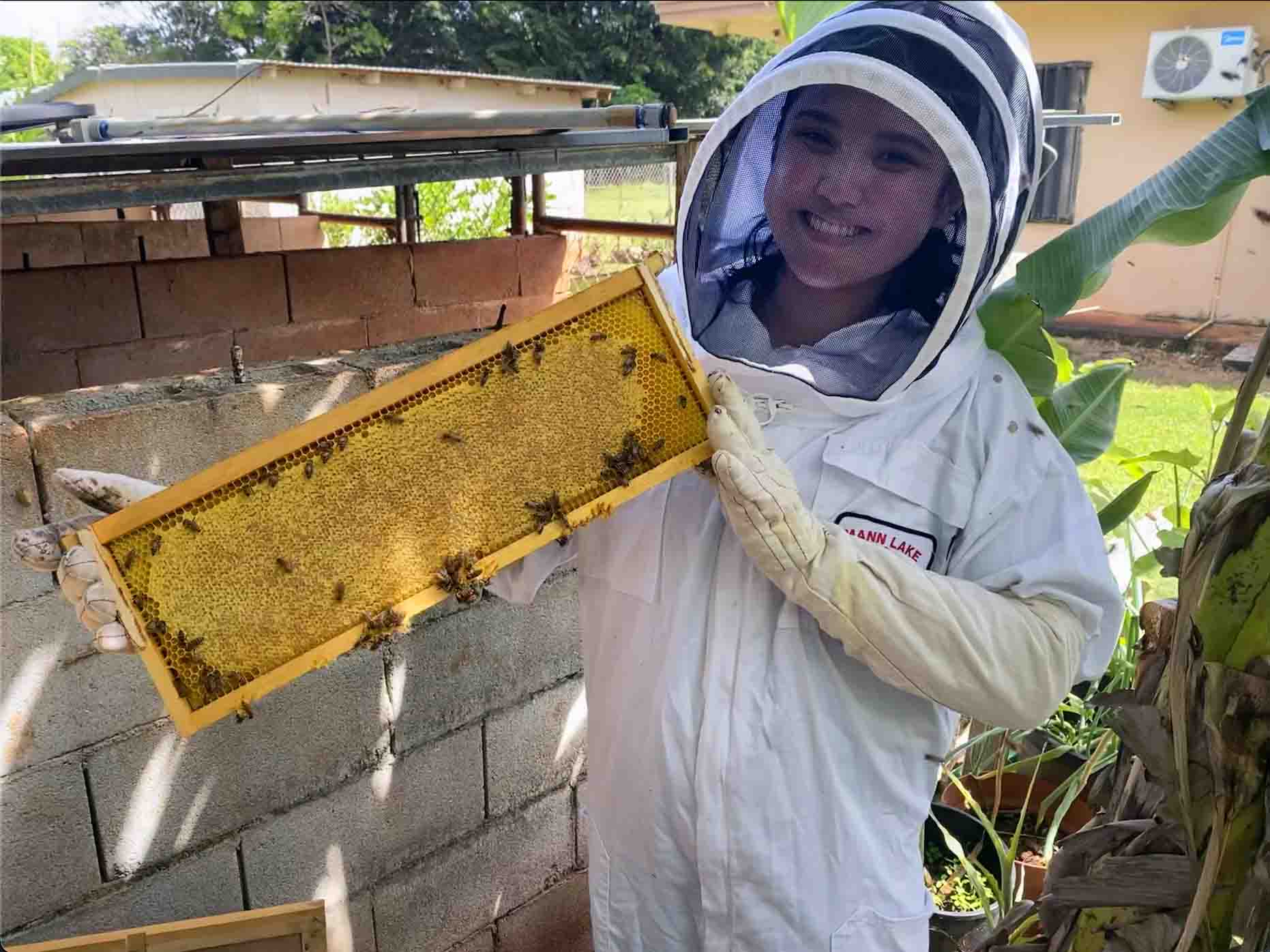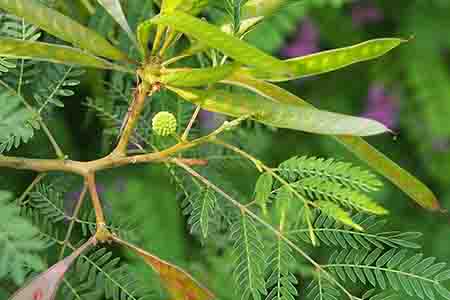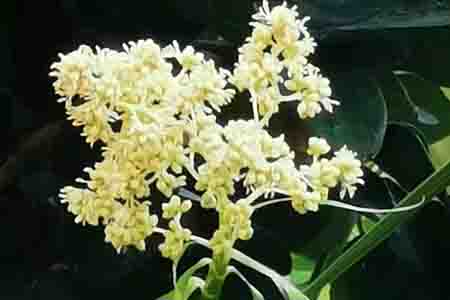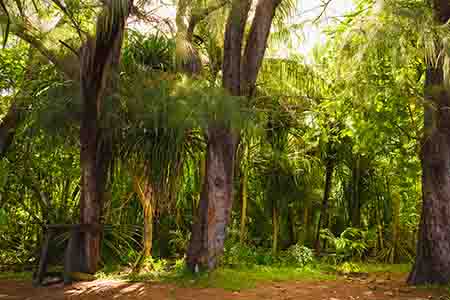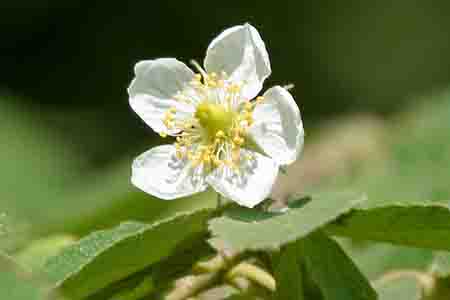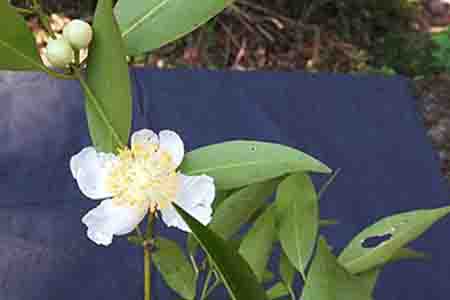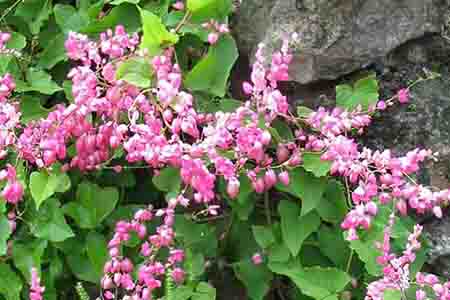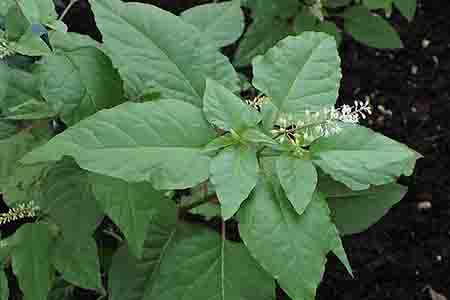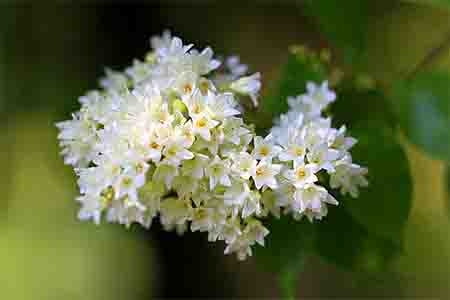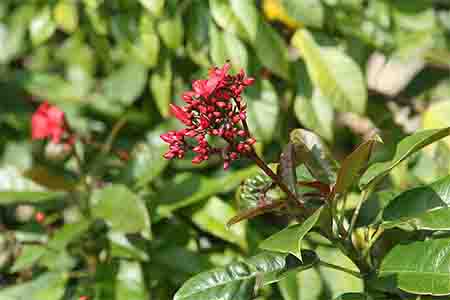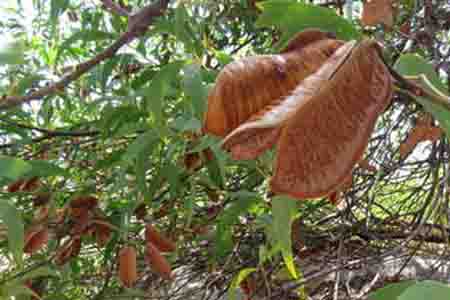UOG pollen study reveals the food sources of Guam honeybees
UOG pollen study reveals the food sources of Guam honeybees
UOG pollen study reveals the food sources of Guam honeybees
4/3/2024
| Most common pollen types in Guam apiaries |
||
|---|---|---|
| Species | Common (and CHamoru) Name |
|
| 1 | Leucaena leucocephala |
River tamarind
|
| 2 | Flagellaria indica |
False rattan
|
| 3 | Casuarina equisetifolia |
Ironwood (gagu)
|
| 4 | Muntingia calabura |
Cherry tree (mansanita)
|
| 5 | Mesua ferrea |
Ironwood
|
| 6 | Antigonon leptopus |
Chain of love
|
| 7 | Rivina humilis |
Blood berry
|
| 8 | Porana volubilis |
Bridal creeper
|
| 9 | Jatropha integerrima |
Rose-flowered jatropha
|
| 10 | Acacia crassicarpa |
Thick-podded salwood
|
A first of its kind study for Guam has revealed the food foraging habits of honeybees and found that Guam bees have a diverse diet of at least 139 plants, with the most common being Leucaena leucocephala, or what is known locally as tångantångan.
Honeybees play an important role in pollinating crops and 80 percent of all flowering plants. Plants require this pollination to produce food and more plants, which then convert carbon dioxide into breathable oxygen, purify groundwater, and contribute to soil health. Few honeybee-related studies have been conducted in Guam or Micronesia, but with pollinator populations dropping alarmingly across North America, there is a need to study what contributes to their survival, including food sources and whether those sources are providing them adequate nutrition.
The unpublished study was the thesis project of Master of Science in Biology candidate Jonae Sayama, who worked in coordination with her supervisor, UOG entomologist Dr. Ross Miller, and UOG environmental science alumnus Christopher Rosario, who now heads the Guam Beekeepers Association and works as Guam’s state entomologist at the Guam Department of Agriculture.
Sayama sampled pollen grains from 10 randomly selected apiaries around the island over a year’s time starting in January 2022 and sent them to a lab for the plant sources to be identified.
The results showed 139 plant types, which Sayama said seems to be a good number of food sources compared to similar studies in other locations.
“Some studies have recorded 200 to 400 plant species foraged on,” she said. “I believe that 139 is a good number, considering we had many pollen grains that could not be identified to the species level due to an incomplete reference collection of plants in Guam.”
Tångantångan is the most abundant plant species identified in the pollen, accounting for 14.1% of the samples. The next most abundant species were Flagellaria indica, or false rattan (4.2%), and Casuarina equisetifolia, or ironwood (2.7%). Among samples not identified to the species level, Fabaceae (flowering legume, pea, and bean plants) accounted for 50.6% of the remaining samples and Aracaceae (palm trees) for 4.2%.
Sayama, who is on track to graduate from UOG with her master’s in biology this May, said her study provides essential information for beekeepers and the environmental community about the type and broad variety of floral foraging sources honeybees utilize. It can inform decisions that will help honeybee populations in Guam to thrive and continue to provide important services to the ecosystem and agriculture industry.
This study was supported by a Hatch grant from the U.S. Department of Agriculture.

